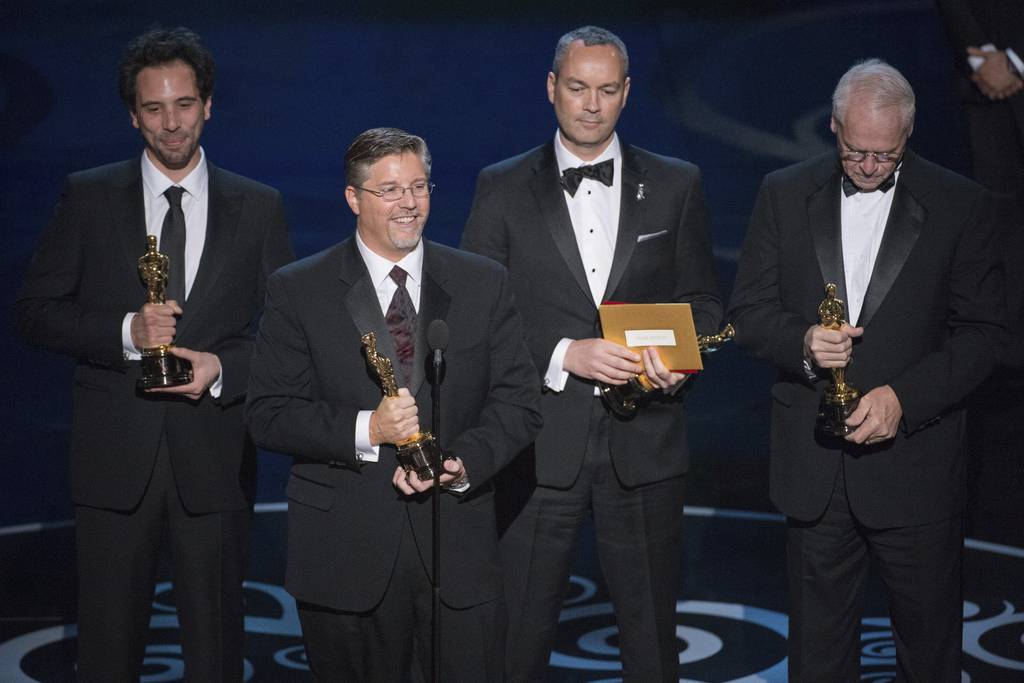[ad_1]
Update: As of September 13, 2023, Marvel VFX employees have successfully unionized. According to this Variation: “Marvel Studios’ visual effects paid off in a historic move, with the National Labor Relations Board (NLRB) voting unanimously to unionize with the International Alliance of Theatrical Stage Employees (IATSE). “It marks the first time a unit consisting solely of VFX workers has unionized with IATSE.”
Visual effects technology has become extremely sophisticated in recent years. But still, the VFX industry itself is in a difficult situation. It’s not uncommon for visual effects artists to work up to 100 hours a week to meet studio deadlines and accommodate last-minute changes.
So you might be watching a movie or TV show and thinking: The computer-generated imagery (CGI) in this scene isn’t as good as it should be.
Director Taika Waititi made the following observation about his own film: clip We were traveling around last week.. “Thor: Love and Thunder” Alongside star Tessa Thompson, the pair are seen looking at a monitor and joking about a scene from the movie:
“Does this look real?” Waititi points to his CGI character, a humanoid rock pile named Korg, and says: “In this particular shot – no, actually,” Thompson replies, and they both laugh.
If you’re inclined to view Waititi’s response as self-deprecation, his words probably sounded quite different to the VFX artists who worked on the film.
Or as someone on Twitter to put: “It’s crazy to see the millionaire director making fun of your work, as he and the producers force you to change it five times before the deadline for very little salary.”
The challenges faced by VFX artists and the companies that employ them are not well known to most viewers. Studios will probably prefer to keep it that way. But this affects people’s livelihoods and what we see on screen.
Digital site The Gamer recently published compiled Here are a few anonymous Reddit comments from people who work in the VFX industry, many of whom are talking about Marvel. One person noted seeing “grown men punching walls and throwing monitors due to stress.” “I’ve broken down a few times and seen the strain it puts on marriages.”
Marvel may be subject to some of the worst criticism from its VFX artists, but it’s far from alone. This is an industry-wide problem.
So, what’s going on?
The 2014 documentary “Life After Pi” explains this.
The film, directed by Scott Leberecht, is only 30 minutes long. Free on Vimeo and if you care about how the sausage is made, it’s worth your time. The title is a play on words and refers to director Ang Lee’s 2012 film “Life of Pi,” which tells the story of a teenager struggling to survive in the vast ocean in a lifeboat he shares with a Bengal tiger.
Of course, the tiger wasn’t actually there during filming. It wasn’t the ocean either. Much of what you see on the screen is computer generated and indistinguishable from the real thing. Visual effects were done by Rhythm & Hues, a company that won an Oscar for its work on the film.
“I love your creativity as an animator,” VFX artist Amanda Dague says in the documentary. “I can take a blank page and create a performance out of nothing.” This is exactly the case with the movie’s tiger.

Bitter irony? Rhythm & Hues won the Oscar less than two weeks after declaring bankruptcy. The company has been in business for 25 years and has produced 145 films, including “Babe,” a series of Batman movies, “Stuart Little,” “X-Men,” “Elf” and “The Hunger Games.”
While accepting the award for “Life of Pi,” visual effects supervisor Bill Westenhofer talked about the company’s financial troubles, but was drowned out by the orchestra that began playing the theme from “Jaws,” or as one of his colleagues put it. offstage it was “Jaws’d”. Adding salt to the wound, neither Lee, who won the best director award, nor Claudio Miranda, who won the best cinematography, thanked the VFX team in their speeches.
The financial difficulties plaguing Rhythm & Hues are not unique. In the 10 years leading up to Life After Pi’s production, more than 20 VFX companies either closed or filed for bankruptcy.
Here’s what’s behind it:
Studios pay a flat fee or a fixed quote. Let’s use a residential construction analogy, says one VFX artist: A house is built on a fixed bid, “which makes sense because there’s a blueprint where everything is laid out, down to every screw, every I-beam, every piece of glass.” But if you want to make significant changes, the builder and the architect will take into account the cost adjustment.
It doesn’t work that way in VFX because they are paid by the project and not by the hour. And overruns are rarely negotiated.

One of the founders of Rhythm & Hues is named John Hughes, and he is soft-spoken and clearly disturbed by what is going on.
“Filmmaking is a very fluid situation now,” he says. “The shots change dramatically. “Half of the shots we bid could easily be lost and replaced by other shots.”
From where?
“The art of filmmaking seems to have changed quite a bit over the years. It used to be that you had a script and you would storyboard it, do all three acts, and then go out and shoot. But nowadays they often start shooting without really knowing what Act 3 will be. “It’s really hard to come up with a fixed offer and a fixed deadline when the studio and the director haven’t agreed on Act 3 yet.”
A VFX artist named Dave Rand explains how this plays out: “When you create huge, fluid dynamic simulations like ‘Life of Pi’ and they want to change the course of that wave HE path This Making the rain fall completely differently means a lot of simulation time to make that change. And finally, it is shown to the client who says, ‘Why is it raining in this shot, it wasn’t supposed to rain?'”
This means hundreds if not thousands of hours of labor, redoing work, or starting from scratch; Most of the time there is no profit contribution if the movie or show is making Gangster Hunters.
Additionally, the director has little direct contact with the VFX artists. Someone like “Thor” director Waititi half-jokingly asks, “Does this look real?” You can begin to see how it is possible for him to ask: As if he had no contribution to this process. This is obviously a maddening situation for VFX artists.
“We understand if the studio has a vision and you are moving towards that vision,” Hughes says. “But what we often see is that they move towards a vision, and you might be moving towards that vision for six months, and then all of a sudden they turn around and go in a completely different direction.”
However, the deadline has not changed. It’s no surprise that some of the visual effects we see aren’t as impressive as they could be. People are trying to work at the top of their game, but they’re in risky conditions.
The dilemma Hughes saw at the time was this: “Our choice was to cut people’s wages. Or laying off a significant number of people. Or making people work overtime without paying overtime by rearranging their contracts.” Any of these changes would “alter the Rhythm and Tones culture so dramatically that it would destroy Rhythm and Tones.”
He pauses, lost in deep thought. “And you know… instead we are on the verge of bankruptcy. So I destroyed Rhythm & Hues anyway.
Is it remarkable that the famous actors and directors working on these projects remain silent on this issue?
Unlike other crew members working in the TV and film industry, VFX artists are not unionized. This may change if there are enough ground waves.
And if enough famous Hollywood actors with influence decide that this is an issue worth tackling, especially at a time when VFX is vital to their business.

Nina Metz is a Tribune critic
nmetz@chicagotribune.com
What to eat. What to watch? What you need to live your best life… is now. Sign up for our meals. Watch. To do. newsletter Here.
[ad_2]
 Best American Comics News bestamericancomics.com started its broadcasting life on December 21, 2022 and aims to offer original content to users. Aiming to share information in technology, science, education and other fields, bestamericancomics.com aims to provide its readers with the most up-to-date and comprehensive. Since the content of the site is created by expert writers, readers are reliable and accurate referrers.
Best American Comics News bestamericancomics.com started its broadcasting life on December 21, 2022 and aims to offer original content to users. Aiming to share information in technology, science, education and other fields, bestamericancomics.com aims to provide its readers with the most up-to-date and comprehensive. Since the content of the site is created by expert writers, readers are reliable and accurate referrers.


